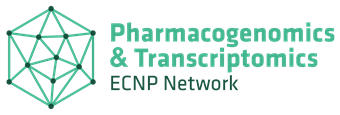Pharmacogenomics and Transcriptomics Network
 The Mission, the need and rationale
The Mission, the need and rationale
With the completion of the Human Genome Project in 2003, it was anticipated that genetic testing would become readily available to accelerate precision medicine and provide a new avenue for improving psychiatric diagnosis as well as the trial and error pharmacological treatment approach. The clinical trial-and-error approach to the treatment of neuropsychiatric disorders continues to be inadequate for patients, challenges clinicians, and is related to large costs to patients, health insurers and society at large. For example, 30 - 50% of patients with major depression do not respond to their first antidepressant trial, and adherence remains often very poor. Similar figures can be cited for other major psychiatric disorders. While treatment response to some medications can be predicted clinically (e.g. 30% of patients with Bipolar Affective Disorder respond to lithium treatment), biological signatures of treatment response remains to be discovered. Hence, the identification and stratification of responders and non-responders based on blood based biological markers remains a top priority in the field and requires a larger concerted effort in collaborative and interdisciplinary research networks. Specifically, a stratified approach to defining responders into groups of likely good responders, intermediate responders and poor/non-responders to specific treatments and those with a predisposition to treatment resistance by developing a response biotype is a key task of pharmacogenomics/-transcriptomics research. The establishment of a large-scale pan-European research network involving centres of excellence through the ECNP Network initiative with a focus on pharmacogenomics/-transcriptomics of neuropsychiatric disorders has not been realised yet.
Why should we focus on pharmacogenomics/-transcriptomics?
Despite the success of collaborative international efforts to identify genetic variants involved in psychiatric disorders, the biological underpinnings of complex psychiatric traits remain elusive. Increasing evidence suggests that psychiatric disorders are the result of complex interactions between genomic variations, epigenetic modifications, and other regulatory mechanisms involved in gene expression. Hence, the transcriptome, representing a nexus of genetic and environmental interactions, can be seen as an essential biological layer of information for studying molecular dysregulations in mental disorders. Transcriptomics can be used for diagnostic purposes to differentiate disease from healthy controls, differentiate disease stages and identify subgroups of patients exhibiting different biological signatures within diagnosis. It also allows to measure the influence of drugs on the transcriptome, which can be useful in getting insights on molecular mechanisms of drug’s action and in predicting treatment response. Using co-expression network analysis-based methods, disease-relevant clusters of co-regulated genes can be identified and further integrated with genetic and epigenetic data for a comprehensive investigation of biological underpinnings of mental illness.
Pharmacogenetic studies so far have focussed on candidate genes that commonly are not replicated and genome-wide association studies are have not been successful in identifying replicable and valid biomarkers of pharmacological treatment response. Although the biological mechanisms and genes involved with psychopharmacotherapy outcomes are better understood, particularly pharmacokinetic mechanisms (e.g. metabolism) that point to drug metabolizing enzymes (e.g., CYP2D6, CYP2C19) are the most well characterized among the numerous potential genes and variants thought to be involved in the pharmacodynamics and pharmacokinetics of psychiatric medications. Beyond non-replicated candidate genes and genes coding for drug metabolizing enzymes, success in pharmacogenetics/-genomics and its translation into clinical practise remains modest across a wide range of psychiatric disorders. Hence, an extension of research efforts into pharmaco-transcriptomics in combination with genomics may be a promising avenue in overcoming some of the current limitations in treatment response prediction research. Importantly, adequately large clinical trials are required to be conducted with pharmacogenomics/-transcriptomics in mind.
Aims and goals
a. To create an ECNP led pan-European Pharmacogenomic/-transcriptomic network through Centres of Excellence to enhance and coordinate pharmacogenomic/-transcriptomic research, expertise, knowledge transfer and translation into clinical practise.
b. To identify the biosignature of treatment response through pharmacogenomic/-transcriptomic studies transnosologically across diagnoses through the various disease-based ECNP networks.
c. To stimulate pharmacogenomic/-transcriptomic research for the discovery of biological underpinnings of neuropsychiatric disorders and the discovery of biological markers of treatment response/non-response and side-effects of the treatment of neuropsychiatric disorders.
d. To foster and collaborate on suitable clinical trial strategies that incorporate pharmacogenomic/transcriptomic research across ECNP networks and TWGs.
e. To create a pharmacogenomics/-transcriptomics data biorepository within the ECNP and EU-wide.
f. To foster the relationship between the Network and industry partners for drug discovery, drug repurposing and for diagnostic tool development based on pharmacogenomic-transcriptomic research in order to enhance translation of pharmacogenomics/transcriptomic findings into clinical trials and clinical practise.
g. To broaden the knowledge base and foster teaching and training opportunities for younger scientists on pharmacogenomics/-transcriptomics and related bioinformatics within the ECNP and its membership.
h. To stimulate and apply for research funding across the EU to extend research into pharmacogenomics/-transcriptomics across neuropsychiatric disorders.
i. To apply for funding in Europe (e.g. Horizon Europe) and to build joint funding opportunities intercontinentally such as with Australia.